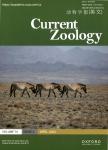What makes a cry a cry? A review of infant distress vocalizations
What makes a cry a cry? A review of infant distress vocalizations作者机构:Department of Biology University of Winnipeg Manitoba R3B 2E9 Canada Department of Population Health and Reproduction School of veterinary Medicine University of California-Davis One Shields Avenue Davis CA 95616 U.S.A. 3 Department of Animal Science and Food Processing in Tropics and Subtropics Czech University of Life Sciences Prague Czech Republic Department of Ethology Institute of Animal Science Prague Czech Republic
出 版 物:《Current Zoology》 (动物学报(英文版))
年 卷 期:2012年第58卷第5期
页 面:698-726页
核心收录:
学科分类:0710[理学-生物学] 07[理学] 0905[农学-畜牧学] 0906[农学-兽医学] 071002[理学-动物学]
基 金:Funding was provided by the Natural Sciences and Engineering Research Council of Canada and The University of Winnipeg supported by long term institutional support from Czech University of Life Sciences, Prague and Ministry of Agriculture of the Czech Republic
主 题:Crying Mother-infant communication Isolation calls Distress calls Motivational-structural rules Parental care Phylogeny
摘 要:In contrast to the cries of human infants, sounds made by non-human infants in different stressful behavioral contexts (hunger or physical discomfort, isolation, capture by humans or predators) are usually treated as distinct types of vocalizations. However, if distress vocalizations produced by different species and in different contexts share a common motivational state and associated neurochemical pathways, we can expect them to share a common acoustic structure and adaptive function, showing only limited variation that corresponds to the infant's level of arousal. Based on this premise, we review the acoustic structure and adaptive function of two types of distress calls, those given when infants were isolated from their mothers (isolation caUs) or captured by humans (capture calls). We conducted a within-context comparison examining the two call types across a diverse se- lection of mammalian species and other vertebrate groups, followed by a comparison of how acoustic structure and function dif- fers between these contexts. In addition, we assessed acoustic traits that are critical to the response of caregivers. Across verte- brate species, distress vocalizations produced in these two behavioral contexts tend to be tonal with a simple chevron, flat or de- scending pattern of frequency modulation. Reports that both isolation and capture calls of vertebrate infants serve to attract care- givers are universal, and the fundamental frequency of infant vocalizations is often critical to this response. The results of our re- view are consistent with the hypothesis that differences in the acoustic structure of isolation and capture distress vocalizations re- flect differences in arousal, and not discrete functions. The similarity in acoustic structure and caregiver response observed across vertebrates adds support to the hypothesis that the production and processing of distress vocalizations are part of a highly-conserved system of social vocal behaviour in vertebrate



